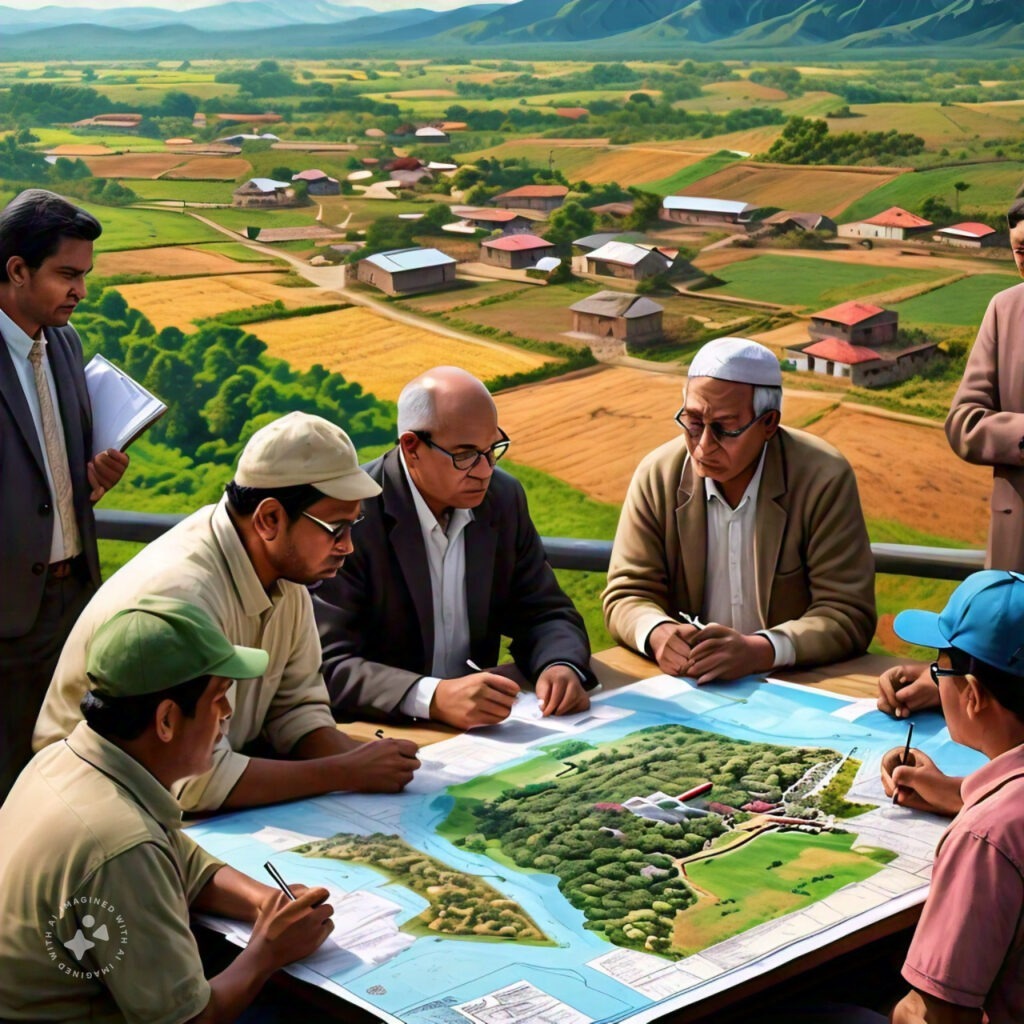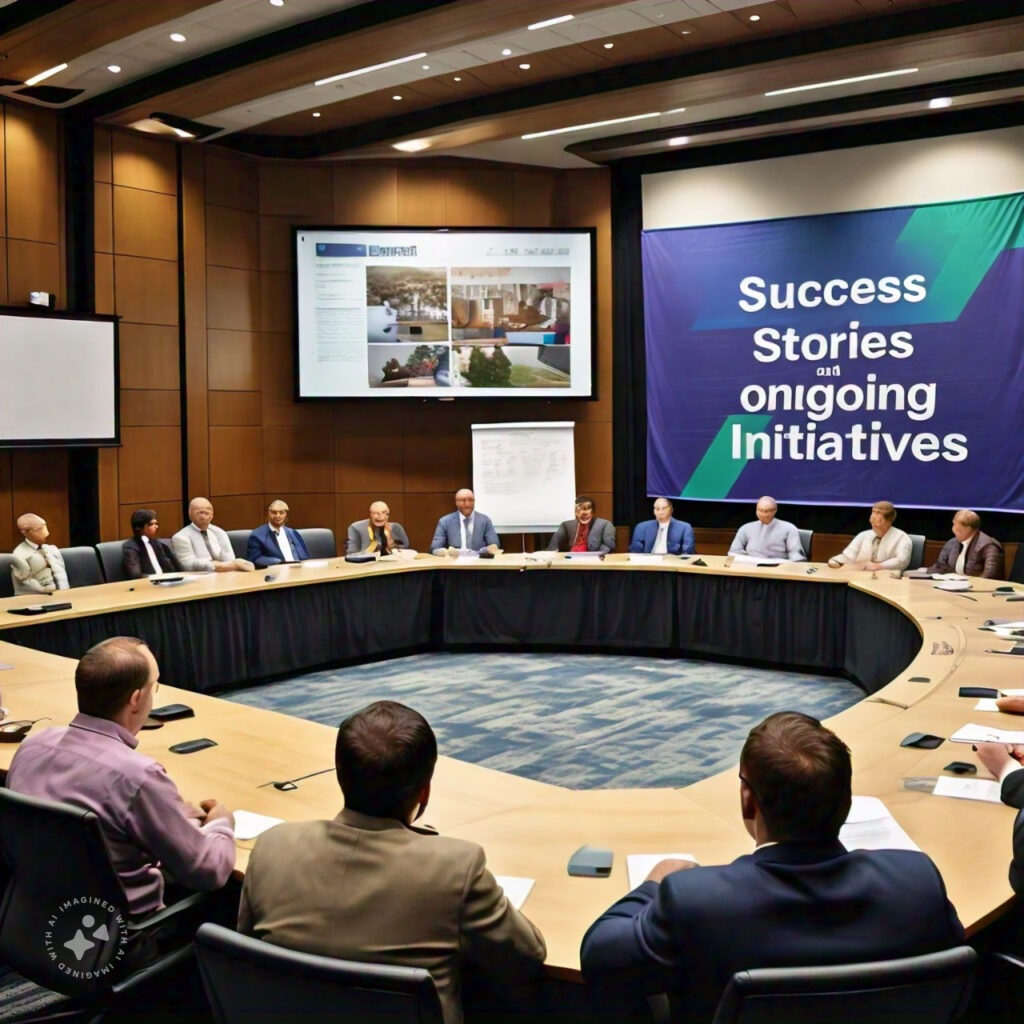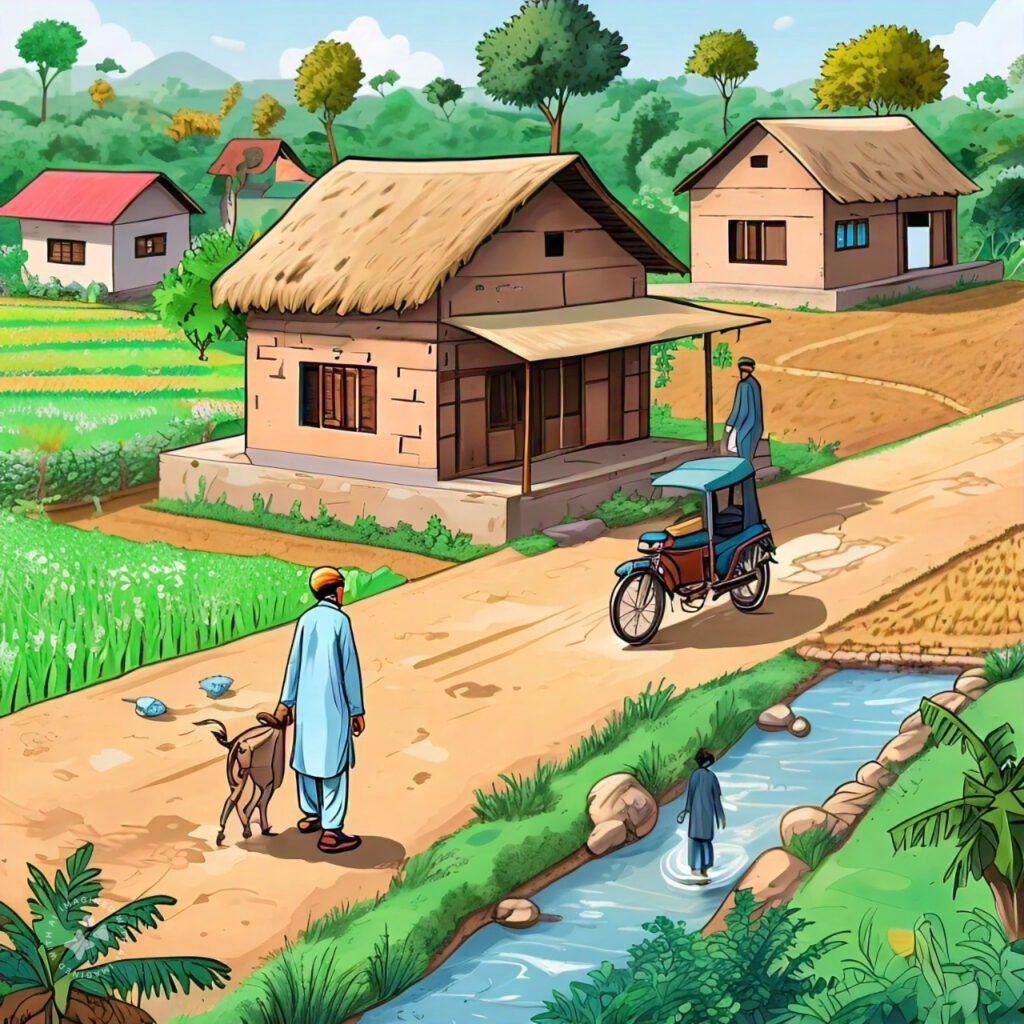Pakistan, a country with a rich cultural heritage and diverse geography, faces significant development challenges, particularly in its rural areas. Home to approximately 65% of the country’s population, rural Pakistan struggles with poverty, limited access to basic services, and inadequate infrastructure. To address these issues, various rural development initiatives have been launched by the government, NGOs, and international organizations. This blog post will delve into the current state of rural development in Pakistan, highlighting the challenges, success stories, and ongoing initiatives aimed at empowering rural communities and enhancing their livelihoods.
Challenges in Rural Development
Rural Pakistan faces numerous challenges, including:
- Poverty: Rural poverty rates are significantly higher than urban areas, with many households living below the poverty line. According to the Pakistan Bureau of Statistics (2020), the poverty headcount ratio in rural areas stands at 33.5%, compared to 12.7% in urban areas.
- Limited access to education: Rural areas often lack quality educational institutions, resulting in low literacy rates and limited opportunities for skill development. The literacy rate in rural Pakistan is approximately 45%, compared to 65% in urban areas (Pakistan Bureau of Statistics, 2020).
- Inadequate healthcare: Rural healthcare facilities are often under-resourced, leading to poor health outcomes and limited access to essential health services. The ratio of doctors to population in rural areas is significantly lower than in urban areas (World Health Organization, 2020).
- Water scarcity: Many rural areas lack access to clean drinking water, exacerbating health issues and impacting agricultural productivity. According to the World Wildlife Fund (2020), Pakistan ranks among the top 10 countries with the highest water scarcity.
- Agricultural challenges: Small-scale farmers face difficulties in accessing markets, credit, and technology, hindering their ability to improve yields and increase income. The agricultural sector in Pakistan is characterized by low productivity, inefficient water use, and limited adoption of modern technology (Food and Agriculture Organization, 2020).
- Energy scarcity: Limited access to electricity and other energy sources hinders economic growth and development in rural areas. Approximately 40% of rural households lack access to electricity (World Bank, 2020).
- Gender inequality: Rural women face significant barriers in accessing education, healthcare, and economic opportunities, perpetuating gender-based disparities.
- Limited infrastructure: Rural areas often lack basic infrastructure, including roads, bridges, and communication networks, making it difficult to access markets, services, and opportunities.

Success Stories and Ongoing Initiatives
Despite these challenges, various initiatives have achieved success in promoting rural development in Pakistan. Some notable examples include:

- The Benazir Income Support Program (BISP): A government-led initiative providing financial assistance to low-income households, particularly women. BISP has reached over 5.5 million beneficiaries, with a focus on education and healthcare (BISP, 2022).
- The Punjab Rural Support Program (PRSP): A project focusing on poverty reduction, education, and healthcare improvement in rural Punjab. PRSP has established over 1,000 community-based organizations, benefiting over 1.5 million individuals (PRSP, 2022).
- The Aga Khan Rural Support Program (AKRSP): A comprehensive initiative addressing rural development needs in Gilgit-Baltistan and Chitral. AKRSP has improved livelihoods for over 1.2 million individuals, with a focus on agriculture, education, and healthcare (AKRSP, 2022).
- The Pakistan Poverty Alleviation Fund (PPAF): A government-established fund supporting rural development projects, including infrastructure development and livelihood enhancement. PPAF has invested over PKR 100 billion in rural development initiatives (PPAF, 2022).
- The United Nations Development Program (UNDP): Implementing various projects aimed at improving rural livelihoods, education, and healthcare in Pakistan. UNDP has supported initiatives such as the Pakistan Rural Development Project, benefiting over 1.1 million individuals (UNDP, 2022).
Ongoing Initiatives:
- The National Rural Development Strategy (NRDS): A government-led initiative aiming to improve rural livelihoods, infrastructure, and access to basic services. NRDS focuses on poverty reduction, education, and healthcare improvement (Government of Pakistan, 2020).
- The Pakistan Agricultural Transformation Plan (PATP): A comprehensive plan focusing on agricultural development, productivity enhancement, and market access for rural farmers. PATP aims to increase agricultural productivity by 30% by 2025 (Ministry of National Food Security and Research, 2020).
- The Renewable Energy for Rural Development (RERD): An initiative promoting the use of renewable energy sources, such as solar and wind power, in rural areas. RERD aims to provide electricity access to over 1 million rural households by 2025 (Ministry of Energy, 2020).
- The Pakistan Rural Development Project (PRDP): A World Bank-funded project focusing on improving rural infrastructure, livelihoods, and access to basic services. PRDP aims to benefit over 2 million rural individuals by 2025 (World Bank, 2020).
- The National Agriculture Emergency Program (NAEP): A government-led initiative aimed at improving agricultural productivity, market access, and value addition for rural farmers. NAEP focuses on enhancing the livelihoods of over 1.5 million small-scale farmers (Ministry of National Food Security and Research, 2020).

Empowering Rural Communities
Empowering rural communities is crucial for sustainable development in Pakistan. Initiatives focusing on:
- Capacity building and skills development: Training rural individuals in various skills, such as agriculture, entrepreneurship, and vocational training.
- Community engagement and participation: Encouraging community involvement in decision-making processes and project implementation.
- Access to credit and financial services: Providing rural households with access to financial services, enabling them to invest in income-generating activities.
- Social mobilization and awareness: Raising awareness about social issues, such as education, healthcare, and gender equality.
Technology and Innovation
Technology and innovation play a vital role in rural development. Initiatives such as:
- Digital agriculture platforms: Providing rural farmers with access to market information, weather forecasts, and best practices.
- E-learning platforms: Offering rural individuals access to quality education and skills development opportunities.
- Renewable energy solutions: Promoting the use of solar, wind, and biogas energy in rural areas.
- Mobile health services: Providing rural communities with access to healthcare services and medical expertise.

Conclusion
Rural development initiatives in Pakistan have made significant progress, but much work remains to be done. By addressing the challenges and building on success stories, we can empower rural communities and enhance their livelihoods. It is crucial for the government, NGOs, and international organizations to collaborate and invest in initiatives promoting rural development, ultimately contributing to a more equitable and prosperous Pakistan.
Recommendations
- Increase investment in rural infrastructure, including roads, bridges, and communication networks.
- Improve access to quality education and healthcare services in rural areas.
- Promote agricultural development and productivity enhancement through technology and innovation.
- Enhance access to credit and financial services for rural households.
- Encourage community engagement and participation in decision-making processes.
- Foster public-private partnerships to leverage resources and expertise.


